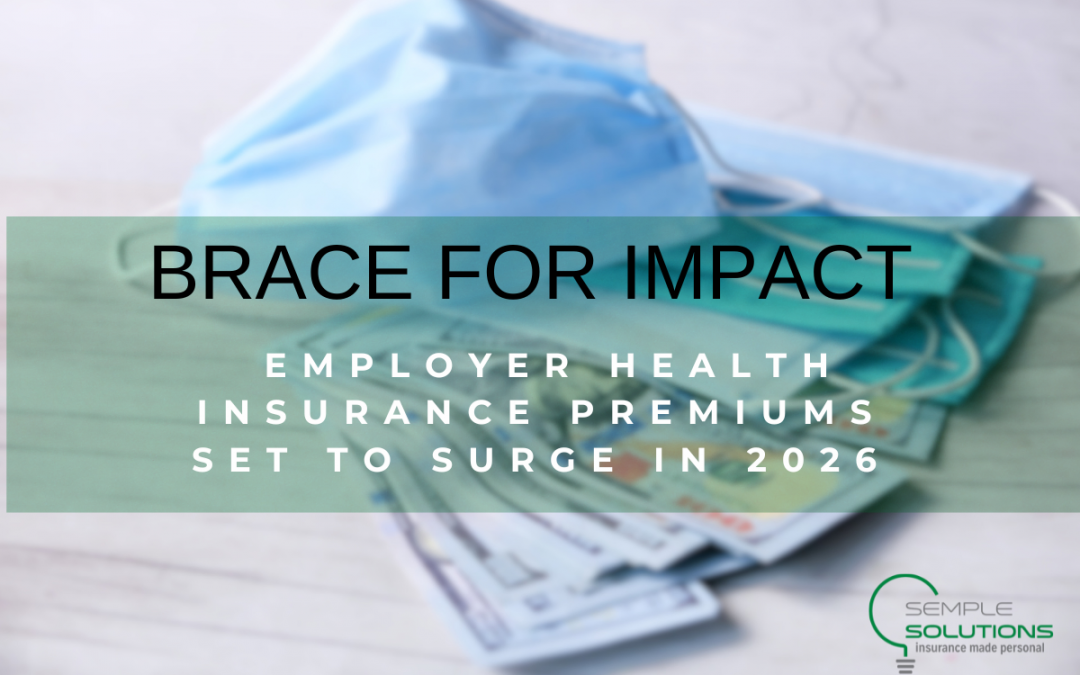As employers prepare benefits for the upcoming year, one thing is clear: the cost of providing health insurance is climbing steeply. After years of relatively moderate growth, the forecast for 2026 is cause for concern—and action.
What the data says
- A survey of employers by Mercer found that the total health benefit cost per employee is expected to rise by ~6.5 % on average in 2026—even after cost-reduction strategies. Without those actions, the increase could approach 9 %.
- Another detailed breakdown shows that rising medical costs, specialty drug expenses, and broader inflation contribute to this uptick.
- In addition, more than half of employers surveyed intend to shift more healthcare costs onto employees (e.g., higher deductibles, greater cost-sharing) for the 2026 plan year.
- Medical cost inflation & increased utilization
After the pandemic’s historic disruption, utilization of healthcare services is rebounding. Employees are seeking care, elective procedures are back, and chronic conditions that might have been deferred are now surfacing. Combined with inflationary pressures on wages for healthcare workers and rising facility/hospital costs, these trends drive up claims. - Specialty drugs & new therapies
The costs of specialty pharmaceuticals—such as certain weight-loss, diabetes and other high-cost therapies—are increasingly contributing to employer benefit cost growth. Many employers cite surprise claims and the need to manage these treatments carefully. - Spill-over from policy & marketplace dynamics
Although this blog focuses on employer plans, it’s worth noting that the broader insurance market is seeing premium increases in the individual/ACA space of 15-20 % or more. Those increases ripple into employer-sponsored coverage via shared risk, provider pricing pressure and compensation demands. - Cost-shifting and benefit design fatigue
For many employers, past cost-control measures (higher cost-sharing, narrower networks, high-deductible plans) have less “juice” remaining. With benefits already leaned on, it becomes harder to contain rising costs without shifting more to employees or redesigning the plan entirely.
What this means for employers and employees
- For employers: A 6-9 % increase in benefit cost is significant. Firms must revisit budgeting, benefits strategy, network/provider contracting, and plan design. Some may consider alternative models (e.g., reference-based pricing, full/partial self-funding, high-performance networks).
- For employees: Even if employers absorb much of the cost, it’s likely employees will see higher deductibles, higher cost-sharing, or changes to benefits (e.g., fewer providers, different pharmacy formularies). The “take-home” value of compensation may shift as more of total compensation shifts to healthcare.
- For small businesses: Smaller employers often lack the purchasing clout of large firms and may feel the increase more acutely. They may explore alternative approaches (e.g., group captives, association plans, health reimbursement arrangements).
- For plan sustainability: If costs continue to outpace wage growth and productivity, benefits become a heavier burden for employers—and employees’ share of total compensation shifts further toward health costs rather than pay or other benefits.
Strategic actions employers can take now
- Review and enhance cost-containment strategies
Consider high-value provider networks, steerage to lower-cost care venues (telehealth, outpatient vs inpatient), rigorous pharmacy benefit management, and disease-management programs. * - Revisit plan design and employee cost-sharing
Evaluate if deductibles/co-payments are appropriate given current cost trends. Consider tiered networks, high-deductible health plans (HDHPs) paired with health-savings accounts (HSAs), or voluntary supplemental coverages. - Communicate clearly with employees
Transparent communication about why premiums or cost-sharing are increasing matters. Employees often are unaware of the drivers behind cost increases and may appreciate education about how the plan works and what choices they have. - Leverage data and analytics
Use claim-trend data, utilization patterns, and benchmarking to identify high-cost segments (e.g., specialty drugs, chronic conditions, behavioral health) and intervene proactively. - Explore alternative contracting models
Some employers are exploring value-based arrangements with providers, direct contracting, subscription models for certain therapies, or stop-loss modifications in self-funded arrangements.
Looking ahead
The 2026 increase signals a turning point: benefit cost growth may be climbing back toward pre-pandemic acceleration levels after years of moderation. Employers who treat this as a one-time blip may be caught off guard. Instead, adopting a proactive and strategic stance now can help manage the impact on their workforce and financials.
While employers may not be able to eliminate the cost pressure entirely, they can influence how the costs are managed, who absorbs them (employer vs employee), and what benefit model works best for their workforce and budget.
Closing thought
If you’re an employer planning for next year, don’t assume “just a small uptick” in health benefit costs. The 2026 forecast suggests a meaningful leap—one that merits robust review and strategic planning. And for employees, it’s not only about premium dollars — it’s about how benefit offerings, access, and cost-sharing may shift within your plan.
For over 20 years, the team at Semple Solutions has been making group benefits for small and mid-sized businesses easier. Although we help clients throughout the United States, our headquarters are located in Middlesex County, NJ. We specialize in group benefits for small to mid-sized businesses with 2 to 250+ employees. We help employers navigate the complexities of medical, dental, vision, life, and disability insurance—matching them with the best plans at the most competitive rates. Our personalized, hands-on approach ensures your team gets the support they need. Ready to simplify your employee benefits? Click here or call us at (732) 238-6734 to schedule a demo today.




